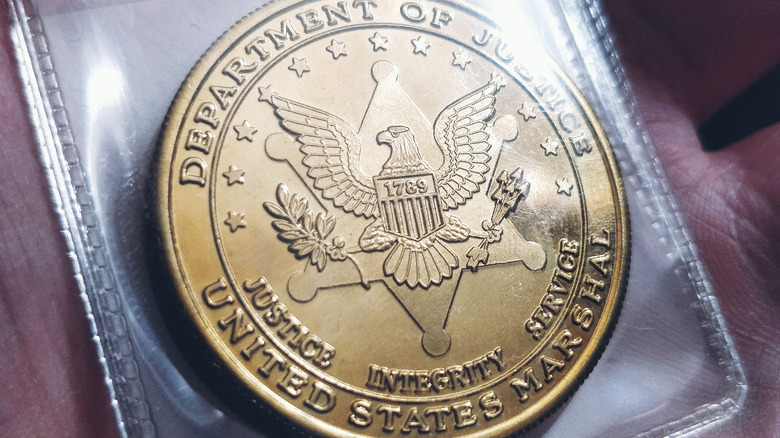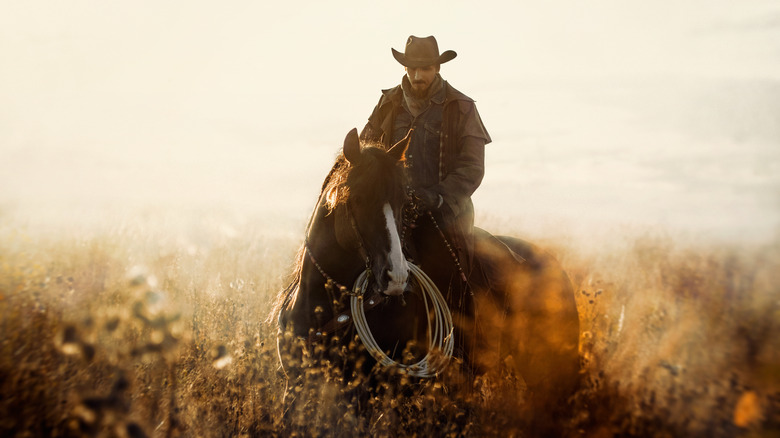The Incredible Danger U.S. Marshals In The Wild West Faced
The image of a U.S. marshal working in the olden days of the Old West often conjures up romantic visions of tough, no-nonsense men in cowboy hats with firm senses of right and wrong, keeping law and order amid fighting, shooting, cattle rustling, and horse robbing. In reality, the job was incredibly dangerous; the white settlers who expanded into the Native American territory of the Western United States were often attracted to the lawlessness and freedom afforded them by living there. The "Wild West" nickname was apt.
In 1789, per the U.S. Marshals Service website, the Judiciary Act created the offices of U.S. Marshal and Deputy Marshal; marshals had "extensive authority" to support their jurisdiction's federal courts, meaning they served processes, made arrests, and took charge of prisoners. As you can imagine, being tasked with keeping law and order during a time when criminals and desperadoes ran roughshod over the territories came with its fair share of danger and, often, death. The site goes on to tell the stories of marshals' face-offs with a bevy of infamous Wild West criminals, including William "Billy The Kid" Bonney, the Doolin-Dalton gang, and Frank and Tom McLaury.
Constant violence in the Wild West
As reported by the U.S. Marshals Service, it was very common for marshals to die in the line of duty. On April 15, 1872, eight deputy marshals were shot and killed in Tahlequah territory, which is now Oklahoma, in what came to be called the Goingsnake Massacre. The marshals were attempting to apprehend a Cherokee man, Ezekial Proctor, who had shot and wounded a white man named Kesterson and then shot and killed his wife, Polly, who was a Cherokee woman. Kesterson worried the Cherokee court would acquit Proctor, so he requested help from the marshals. Two marshals organized a party of 10 men to ride to the Cherokee trial, await the verdict, and arrest Proctor if he was acquitted. As they waited outside the schoolhouse where the trial was taking place, they were ambushed by a group of Cherokees, who exited the schoolhouse, and came out shooting. Seven marshals were killed instantly and one died later, while three Cherokee men were killed and others wounded.
Another deadly shootout occurred on September 1, 1893. The infamous Doolin-Dalton gang, also known as the Wild Bunch, was notorious for robbing banks and eluding authorities. In 1893, some marshals realized the Wild Bunch was using the town of Ingalls in Oklahoma territory to hide out. Four deputy marshals led a posse of eight more men to George Ransom's saloon to capture and arrest the gang. A shootout and chase ensued, at the end of which three marshals were killed, and additional outlaws and bystanders were injured, while one outlaw, "Arkansas Tom" Jones was apprehended and sent to jail.

